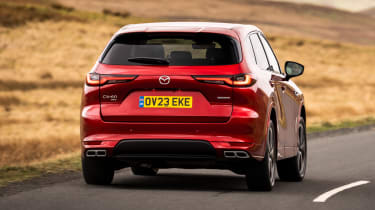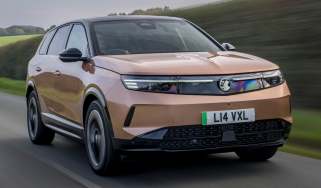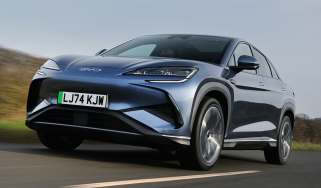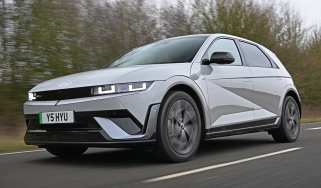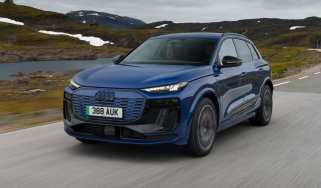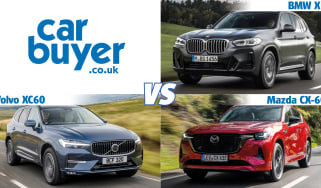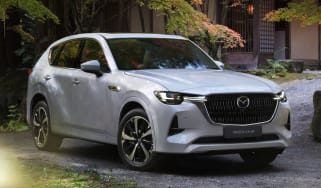Mazda CX-60 review – a left-field good-to-drive premium SUV
“The Mazda CX-60 is the brand’s first plug-in hybrid, and is an interesting alternative to premium PHEVs from BMW and Audi”
Pros
- Premium feel
- Decent electric range
- Well equipped
Cons
- Drab engine note
- Limited engine range
- Few clever practicality touches
Verdict – is the Mazda CX-60 a good car?
Mazda has entered the premium SUV market for the first time, and the CX-60 is a strong contender. It looks sharp and its driving manners reflect this, although this does mean it rides quite firmly compared with a Volvo XC60. A plug-in hybrid should appeal to company car drivers, but it’s the 3.3-litre diesel that’s a surprise hit. Clever technology means it has low emissions and can top 50mpg, while it’s quiet and smooth to drive. As most manufacturers turn their back on diesel, this parting shot from Mazda could go down as one of the best.
Mazda CX60 models, specs and alternatives
While Mazda may be most famous for its MX-5 and RX-7 sports cars, the brand’s most powerful model to date is this: the Mazda CX-60 premium family SUV. It’s Mazda’s upmarket answer to German rivals like the BMW X3 or Audi Q5, but it’s a more interesting, left-field choice for those that want something different.
Mazda announced a refreshed version of the CX-60 which will arrive in summer 2025, with small tweaks and improvements to the mid-range car’s interior, such as Nappa leather seats and a new dashboard panel, while the same engines are carried over. The rear suspension of all cars will also be tweaked for improved comfort and stability, but all in all changes to the CX-60 will be pretty minor.
It’s specifically the 2.5-litre petrol plug-in hybrid version of the CX-60 that’s the most powerful model, but buyers can also choose from two 3.3-litre mild-hybrid diesel engines, which are becoming somewhat of a rarity these days. Unfortunately if you don’t want to drive a diesel or plug-in hybrid, there’s no solely petrol version available, but surprisingly the plug-in hybrid is only marginally more expensive than the entry-level diesel – there’s hardly anything between them, with both models costing just over £45,000. The more powerful of the two diesels is actually the most expensive and starts from just under £48,000.
The diesels offer commendable fuel economy, but going for the plug-in hybrid means you get the added versatility of up to 40 miles of electric range – that will come in useful for shorter trips around town without using a drop of fuel, but rivals can go further on a charge.
 Top 10 best plug-in hybrids on sale today
Top 10 best plug-in hybrids on sale today
Inside, the CX-60 feels high quality enough to compete with the aforementioned German cars, with the fit and finish being generally excellent. The switchgear has a satisfying feel, and the crisp screen can be controlled by a handy rotary dial. Tech is good, too. There’s even a driver profile system that uses facial recognition to automatically switch to your preferred settings; it can also suggest the optimum driving position based on your height. Trim levels are known as Exclusive-Line, Homura and Takumi.
Exclusive-Line is generously equipped, with heated seats, automatic LED headlights, a reversing camera and a windscreen-projected head-up display. Homura adds bigger wheels, body-coloured wheel arches, electric seats, heated rear seats and a Bose sound system. Top-spec Takumi gets design and trim upgrades like white Nappa leather and a maple console.
Incidentally, the CX-60 won’t replace the CX-5. Its hybrid engine makes it the second phase of the brand’s electrification push, after the launch of the quirky, yet flawed Mazda MX-30 EV in 2021, which has itself been joined by a plug-in hybrid version with a rotary engine range extender called the R-EV.
Which Is Best?
Cheapest
- Name3.3d 200 Exclusive-Line 5dr Auto
- Gearbox typeAuto
- RRP£46,430
Most Economical
- Name2.5 PHEV Exclusive-Line 5dr Auto
- Gearbox typeAuto
- RRP£46,530
Fastest
- Name2.5 PHEV Exclusive-Line 5dr Auto
- Gearbox typeAuto
- RRP£46,530

